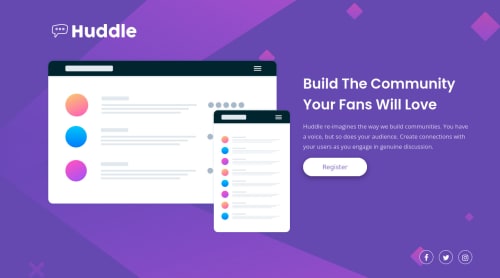Submitted over 3 years agoA solution to the Huddle landing page with a single introductory section challenge
Huddle landing page with a single introductory section
sass/scss
@yterai

Solution retrospective
I wanted to practice Sass along with file organization in this challenge. I learned how to use variables and import files etc but I was only able to apply variables to colors which I think is pretty basic so if there is any suggestion that I could use more variables I'd love to hear :)
Code
Loading...
Please log in to post a comment
Log in with GitHubCommunity feedback
No feedback yet. Be the first to give feedback on Yui's solution.
Join our Discord community
Join thousands of Frontend Mentor community members taking the challenges, sharing resources, helping each other, and chatting about all things front-end!
Join our Discord